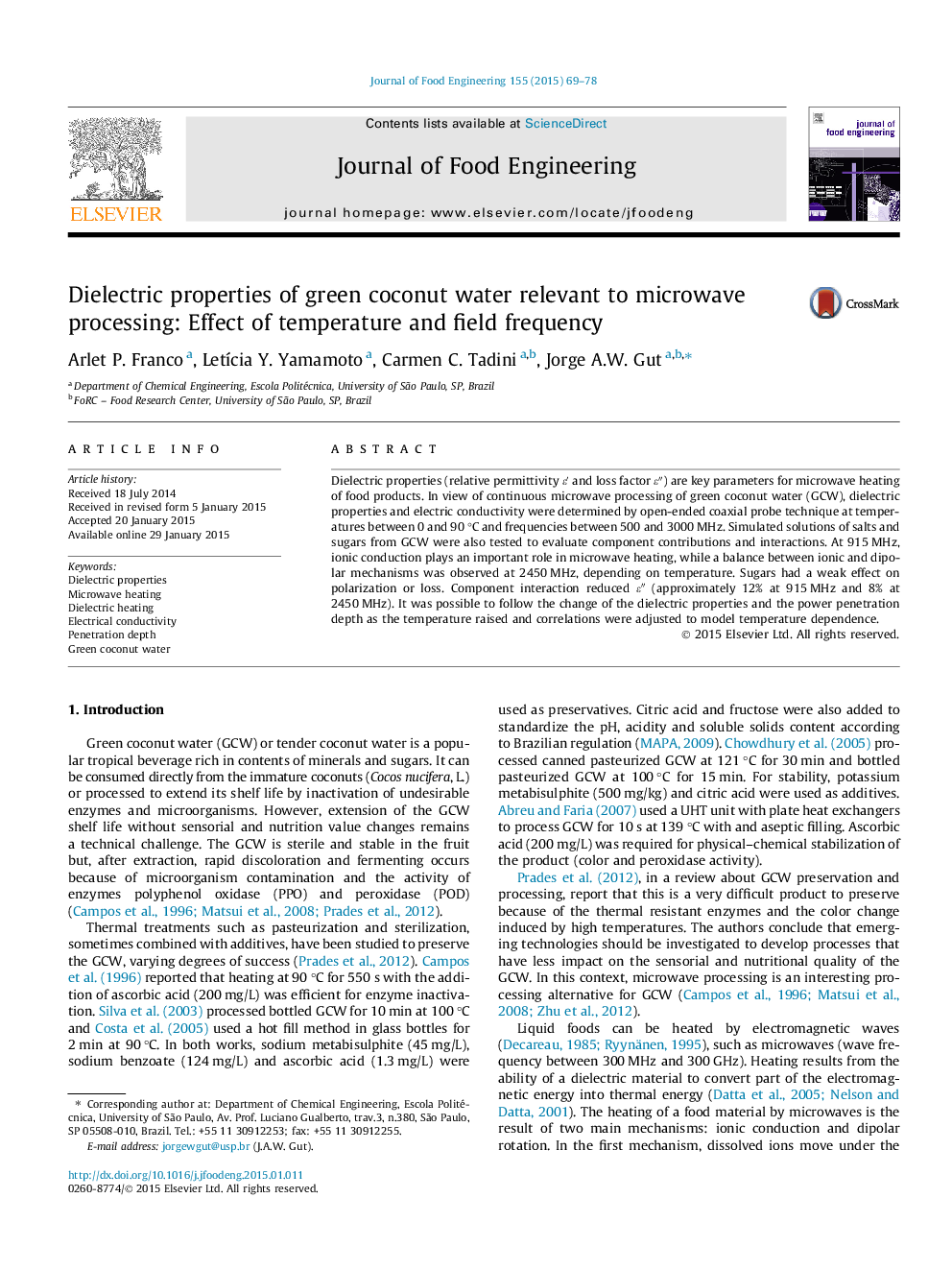| Article ID | Journal | Published Year | Pages | File Type |
|---|---|---|---|---|
| 6665515 | Journal of Food Engineering | 2015 | 10 Pages |
Abstract
Dielectric properties (relative permittivity Éâ² and loss factor Éâ³) are key parameters for microwave heating of food products. In view of continuous microwave processing of green coconut water (GCW), dielectric properties and electric conductivity were determined by open-ended coaxial probe technique at temperatures between 0 and 90 °C and frequencies between 500 and 3000 MHz. Simulated solutions of salts and sugars from GCW were also tested to evaluate component contributions and interactions. At 915 MHz, ionic conduction plays an important role in microwave heating, while a balance between ionic and dipolar mechanisms was observed at 2450 MHz, depending on temperature. Sugars had a weak effect on polarization or loss. Component interaction reduced Éâ³ (approximately 12% at 915 MHz and 8% at 2450 MHz). It was possible to follow the change of the dielectric properties and the power penetration depth as the temperature raised and correlations were adjusted to model temperature dependence.
Keywords
Related Topics
Physical Sciences and Engineering
Chemical Engineering
Chemical Engineering (General)
Authors
Arlet P. Franco, LetÃcia Y. Yamamoto, Carmen C. Tadini, Jorge A.W. Gut,
